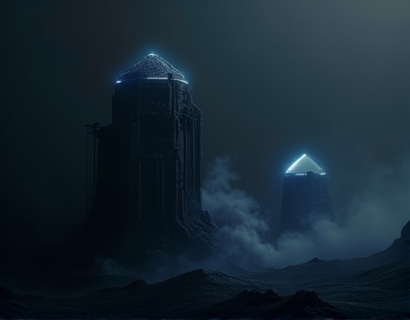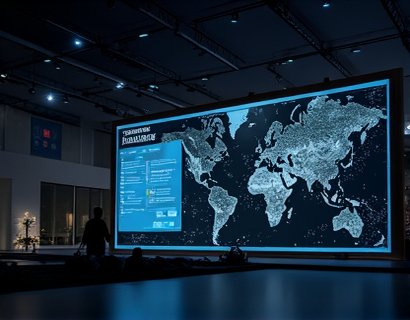Effortless Placeholder Code Generation: A Game Changer for Web Developers and Businesses
In the fast-paced world of web development, efficiency and professionalism are key. The ability to quickly generate placeholder code can significantly streamline the development process, allowing developers, designers, and business owners to focus on what truly matters - creating high-quality, user-friendly websites. This article delves into the benefits and functionalities of a custom placeholder code generator, designed to empower web professionals and businesses by saving time and enhancing the overall efficiency of their projects.
Understanding Placeholder Code
Placeholder code refers to the temporary content used in website design and development to simulate the final product. This includes dummy text, images, and other elements that mimic the look and feel of the actual content. The primary purpose of placeholder code is to provide a realistic preview of the website's structure and design, enabling stakeholders to review and provide feedback before the real content is implemented.
Benefits of Using a Placeholder Code Generator
One of the most significant advantages of using a placeholder code generator is the time savings it offers. Manually creating placeholder content for each element on a website can be a tedious and time-consuming task. A generator automates this process, allowing developers and designers to produce professional-looking placeholder content swiftly and efficiently. This not only accelerates the development cycle but also reduces the likelihood of human error, ensuring a smoother workflow.
Another benefit is the consistency and professionalism it brings to the placeholder content. Automatically generated placeholders maintain a uniform style and format, which is crucial for maintaining the visual integrity of the website during the development phase. This consistency helps in presenting a cohesive and polished preview, which is essential for client presentations and internal reviews.
Customization Options
A robust placeholder code generator offers extensive customization options to cater to the specific needs of different projects. Users can choose from a variety of fonts, colors, and layouts to ensure that the placeholder content aligns with the desired design aesthetic. This flexibility is particularly valuable for digital agencies and design studios that work on multiple projects simultaneously, each with unique branding and design requirements.
Moreover, the ability to customize placeholder text is crucial. Generators can produce realistic-looking text that mimics the tone and style of the actual content. This includes varying sentence structures, paragraph lengths, and even incorporating lists and bullet points. Such customization ensures that the placeholder content is not only visually appealing but also contextually relevant, providing a more accurate representation of the final product.
Enhancing Collaboration and Feedback
The use of placeholder code generators significantly enhances collaboration among team members and between clients and developers. With a generator, developers can quickly produce a functional prototype that can be shared with stakeholders for review. This early and continuous feedback loop helps in identifying and addressing issues early in the development process, reducing the risk of major revisions later on.
For business owners and clients, having access to a realistic preview of the website allows for more informed decision-making. They can assess the layout, readability, and overall user experience without waiting for the actual content to be ready. This proactive approach to feedback and iteration leads to higher satisfaction and a more successful final product.
Streamlining the Development Process
The integration of a placeholder code generator into the development workflow streamlines several key processes. First, it eliminates the need for manual content creation, freeing up valuable time for developers to focus on coding and design. This increased efficiency translates to faster project turnaround times, which is particularly beneficial for agencies handling multiple clients and projects.
Additionally, the generator can be easily integrated into existing development tools and workflows, such as CSS preprocessors and content management systems. This seamless integration ensures that the placeholder content is consistent with the rest of the project, maintaining a cohesive design language throughout the development phase.
Use Cases for Different Industries
The benefits of a placeholder code generator are not limited to a specific industry. Here are some use cases across various sectors:
- Digital Agencies: Agencies can use placeholder generators to quickly create demo sites for new projects, showcasing their design capabilities to potential clients. This speeds up the proposal process and helps in securing new clients more efficiently.
- Tech Startups: Startups often operate with limited resources and tight deadlines. A placeholder code generator allows them to rapidly prototype and test their ideas, accelerating the product development cycle and enabling faster time-to-market.
- E-commerce Businesses: For e-commerce sites, placeholder generators can produce realistic product listings, category pages, and user interface elements. This helps in visualizing the online store's layout and user experience before the actual products are added.
- Marketing Professionals: Marketers can use placeholder content to create landing pages and test different CTAs, layouts, and designs. This data-driven approach helps in optimizing marketing campaigns for better performance.
Implementing a Placeholder Code Generator
Implementing a placeholder code generator is relatively straightforward. Most generators provide a user-friendly interface where users can input project-specific details such as website dimensions, font choices, and color schemes. The generator then produces the placeholder code based on these inputs.
For developers, integrating the generated code into their projects is as simple as copying and pasting the code into their HTML files. The generator can also output code in various formats, such as HTML, CSS, and even JavaScript, ensuring compatibility with different development environments.
For those without extensive coding knowledge, many generators offer pre-built templates and guided workflows. These tools walk users through the process step-by-step, making it accessible even for non-technical users.
Enhancing Online Presence
The use of placeholder code generators not only speeds up the development process but also enhances the overall online presence of a website. By providing a realistic preview, these tools help in creating a more engaging and user-friendly experience. This, in turn, can lead to higher user retention rates and better conversion metrics.
Moreover, the ability to quickly iterate and test different design elements allows for continuous improvement and optimization. This iterative approach ensures that the final website is not only visually appealing but also functional and user-centric.
Conclusion
In conclusion, a custom placeholder code generator is an invaluable tool for web developers, designers, and business owners. It streamlines the development process, enhances collaboration, and ensures a professional and consistent presentation of website prototypes. By leveraging such a tool, professionals can save time, reduce errors, and focus on delivering high-quality, user-friendly websites that meet the needs of their clients and users.











































